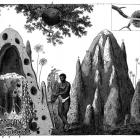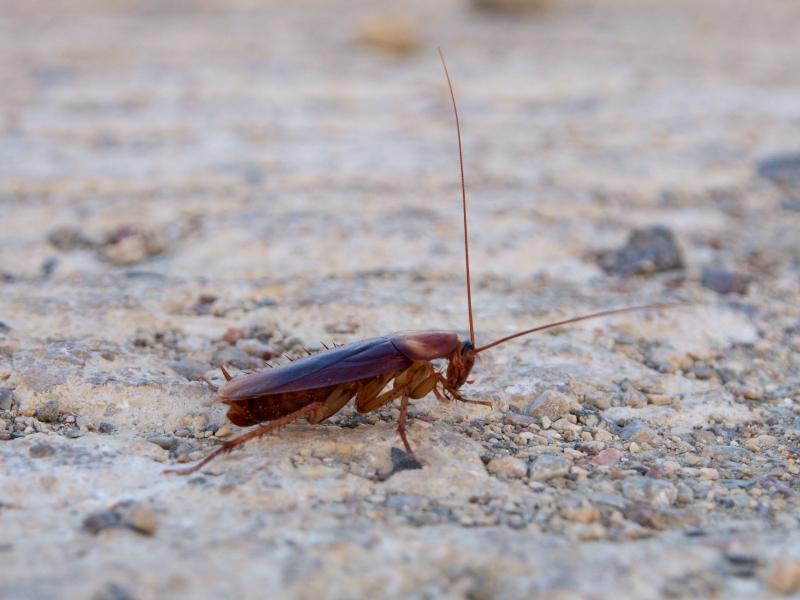
P. americana, view from side
P. americana, view from side
This photo was taken by Sputniktilt. Click here to view Wikimedia source.
 Dieses Werk ist lizenziert unter einer Creative Commons Namensnennung - Weitergabe unter gleichen Bedingungen 3.0 Deutschland Lizenz.
Dieses Werk ist lizenziert unter einer Creative Commons Namensnennung - Weitergabe unter gleichen Bedingungen 3.0 Deutschland Lizenz.
European ships traveling to the New World via Africa brought along an unexpected colonizer: the American cockroach. Like other species of cockroach found in the United States, the insect originated in tropical Africa. Although slave ships were not the first to carry these insects (the egg casing of the insect was found on the San Antonio, a 1625 Spanish vessel shipwrecked in Bermuda), the historical entanglement between African slaves, their descendants, and cockroaches began in the Middle Passage. No invasive species to cross the Atlantic reifies racial and class inequalities quite like the American cockroach. The horrifying conditions of the ocean crossing and the formidable economic conditions experienced by African Americans following emancipation gave fuel to a fallacious association between blackness, poverty, and filth that pervades the American cultural imaginary. Among other things, these erroneous relations developed into justifications for laws such as segregation and other material effects of racism. It all began with the slave ship.
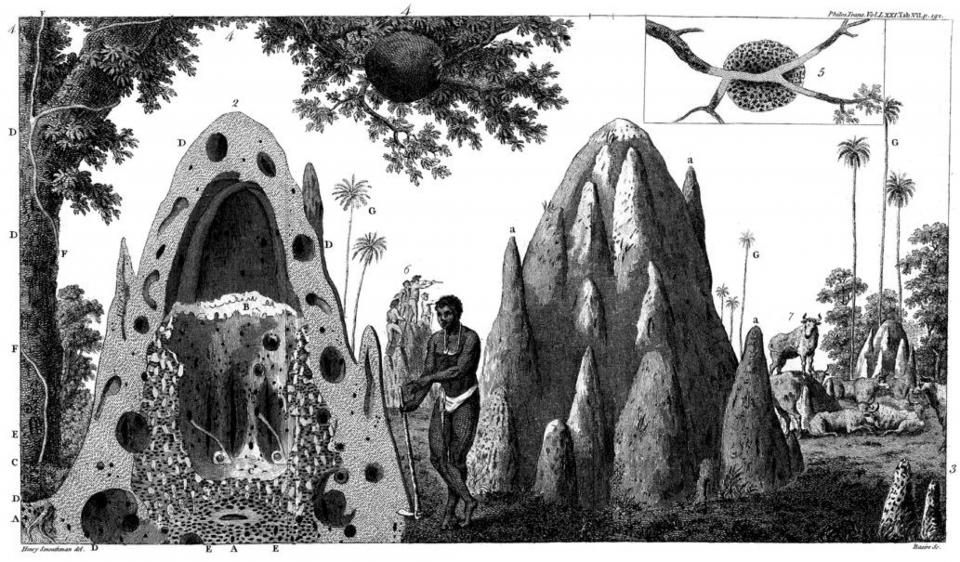
An illustration from Henry Smeathman’s “Some Account of the Termites, Which are Found in Africa and Other Hot Climates” (1781)
An illustration from Henry Smeathman’s “Some Account of the Termites, Which are Found in Africa and Other Hot Climates” (1781)
Henry Smeathman: “Some Account of the Termites, Which are Found in Africa and Other Hot Climates.” In a Letter from Mr. Henry Smeathman, of Clement’s Inn, to Sir Joseph Banks, Bart. P. R. S.
Phil. Tras. R. Soc. London 71 (1781):139–192.
 This work is licensed under a Creative Commons Public Domain Mark 1.0 License.
This work is licensed under a Creative Commons Public Domain Mark 1.0 License.
Operating from the late sixteenth century through the early nineteenth century, the “triangle trade” entailed a three-part route that established the transatlantic slave trade. The ships left England carrying European manufactured goods, such as guns or cloth. Then, they stopped on the west-central coast of Africa to trade these goods for kidnapped Africans, who would pack tightly into an underdeck compartment shared with disease, excess bodily fluids, and vermin of all sorts, including the American cockroaches who willingly stowed away on board. After enduring the Middle Passage and landing in the New World, slaves were sold to plantations for their forced labor. The ships would then be packed full of rum, tobacco, cotton, and sugar and would travel back to England (presumably still infested with cockroaches), thus completing the triangle.
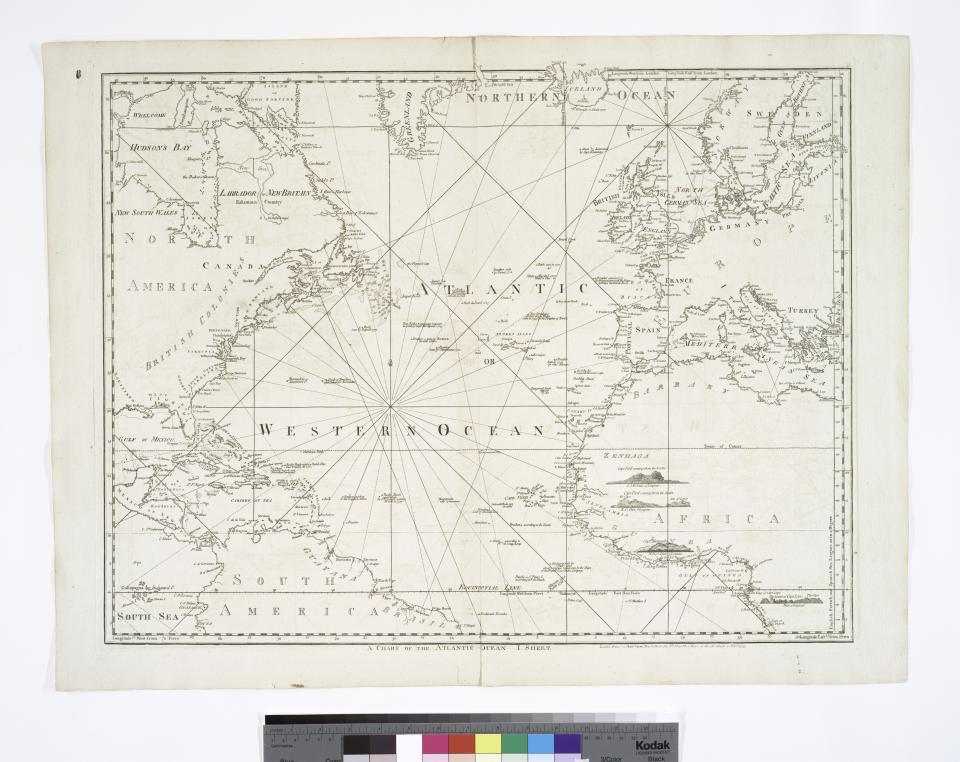
A chart of the Atlantic Ocean
A chart of the Atlantic Ocean
A chart of the Atlantic Ocean. I sheet. Lawrence H. Slaughter Collection of English Maps, Charts, Globes, Books and Atlases / Charts and Maps. New York: New York Library / Robert Sayer, 1725–1794.
From The Lionel Pincus & Princess Firyal Map Division.. This file is made available under the Creative Commons CCO 1.0 Universal Public Domain Dedication.

This work is licensed as a Public Domain Dedication.
The ecology of the slave ship created meeting places for human and nonhuman animal species, both living and dead, including cats, rats, pigs, goats, fowl, and monkeys, as well as European and African men, women, and children and American cockroaches. The female American cockroaches that wriggled onto the ships in West Africa laid eggs that would hatch in 24 to 38 days. Before embarking upon the Middle Passage, ships often remained in African ports while they were slowly filled with captured slaves from villages near and far, allowing cockroaches ample time to breed. If the ships undertook repeated triangular transatlantic journeys, cockroaches proliferated, as the techniques for varmint control in the eighteenth and nineteenth centuries were not very effective: smoking them out or throwing scalding water on them. Roaches and other pests devoured food items intended to keep humans alive. Cockroaches even ruined insect specimens collected by Henry Smeathman, an English entomologist who rode on slave ships on his way to study the termites and ants of Sierra Leone in the late eighteenth century.
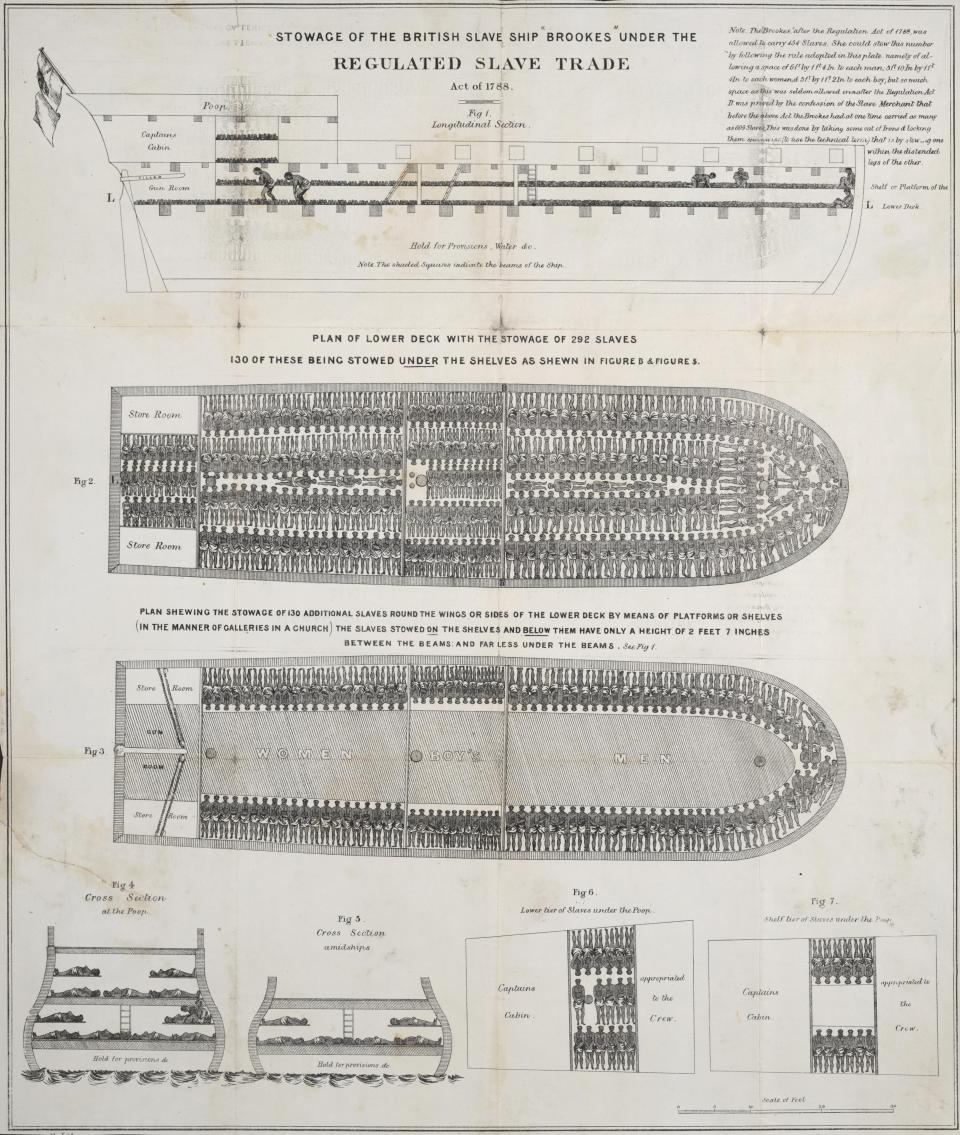
A plan of the slave ship Brookes, showing how 454 slaves were accommodated on board. This same ship had reportedly carried as many as 609 people.
A plan of the slave ship Brookes, showing how 454 slaves were accommodated on board. This same ship had reportedly carried as many as 609 people.
This image is available from the United States Library of Congress’s Prints and Photographs division under the digital ID cph.3a34658. The image was published by the Society for Effecting the Abolition of the Slave Trade.
 This work is licensed under a Creative Commons Public Domain Mark 1.0 License.
This work is licensed under a Creative Commons Public Domain Mark 1.0 License.
While the slave trade in the United States became unlawful as a result of the Act Prohibiting Importation of Slaves of 1807, illegal slave ships continued to bring Africans to the United States for coerced labor and cockroaches along with them. A 1904 report on the last illegal slave ship the Wanderer, developed through interviews with those involved, illuminates what the Middle Passage could be like for slaves on board:
“Those in the hold gasped the foul air, and were tortured by vermin.” This was echoed in the autobiography of Olaudah Equiano, an 11-year-old boy who took this horrific journey almost a century earlier: “…we were all put under deck…The stench of the hold while we were on the coast was so intolerably loathsome, that it was dangerous to remain there for any time…It became absolutely pestilential.”
Of the Wanderer, historian Erik Calonius writes “The cockroaches that had crawled aboard in Africa had multiplied.” Tom Henderson Wells concludes: “The yacht [Wanderer] was alive with cockroaches but appeared in good shape except for being weatherbeaten and having some sails damaged.” From the beginning of the slave trade through the very last ship, stowaway American cockroaches and their offspring comprised a sizable population.
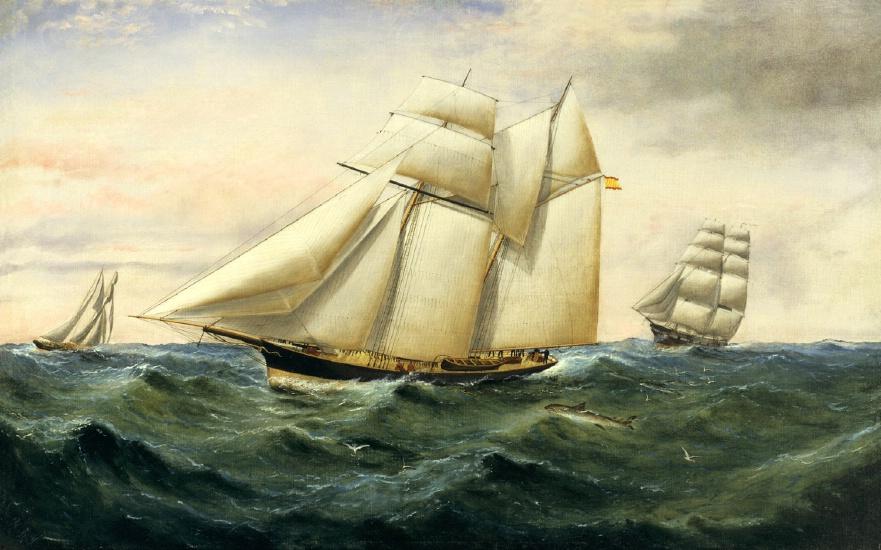
A painting of the USS Wanderer (1857)
A painting of the USS Wanderer (1857)
US Naval Historical Center image via the public domain Dictionary of Ameriacan Naval Fighting Ships.
 This work is licensed under a Creative Commons Public Domain Mark 1.0 License.
This work is licensed under a Creative Commons Public Domain Mark 1.0 License.
While the American cockroaches multiplied, many slaves did not make it all the way across the Middle Passage. And ultimately, when the slaves who did survive were sold to plantations in the Americas, a pervasive negative association between slaves and filth continued. While the slur “roach” or “cockroach” has been linked to a variety of ethnic and racial groups in America and abroad, it, too, has been attributed to African Americans, a practice which unfortunately continues today. Moreover, after the Civil War and the end of slavery, institutional and direct racism placed African Americans in the poorest of neighborhoods and housing conditions, meaning the potential for cockroach infestation was greater. In the first half of the twentieth century, housing projects heavily populated by African Americans were subjected to intense chemical solutions used for pest control, such as hydrocyanic acid gas (pre-WWII) and DDT (post-WWII), adding toxicity and the threat of overexposure (death) to the home. Moreover, in the last few years, research has been published displaying a higher prevalence of asthma in African American children due to the presence of the cockroach feces allergen in poor housing environments. Thus, American cockroaches continue to plague African Americans, revealing how deplorable—and ironic—such connections are.
How to cite
Garcia, Lindsay. “American Cockroaches, Racism, and the Ecology of the Slave Ship.” Environment & Society Portal, Arcadia (Autumn 2017), no. 29. Rachel Carson Center for Environment and Society. doi.org/10.5282/rcc/8048
ISSN 2199-3408
Environment & Society Portal, Arcadia
 This work is licensed under a Creative Commons Attribution 4.0 International License.
This work is licensed under a Creative Commons Attribution 4.0 International License.
2017 Lindsay Garcia
This refers only to the text and does not include any image rights.
Please click on an image to view its individual rights status.
- Bell, William J. & K. G. Adiyodi, eds. The American Cockroach. London: Chapman and Hall, 1981.
- Calonius, Erik. The Wanderer: The Last American Slave Ship and the Conspiracy That Set Its Sails. New York: St. Martin’s Press, 2006.
- Douglas, Starr. “The Making of Scientific Knowledge in an Age of Slavery: Henry Smeathman, Sierra Leone and Natural History.” Journal of Colonialism and Colonial History 9, no. 3 (Winter 2008).
- Rediker, Marcus. The Slave Ship: A Human History. New York: Penguin Books, 2007.
- Rehn, James A.G. “Man’s Uninvited Fellow Traveler--The Cockroach.” The Scientific Monthly 61, no. 4 (Oct. 1945): pp 265–76.
- Taylor, Paul S. “Spanish Seamen in the New World during the Colonial Period.” The Hispanic American Historical Review 5., no. 4 (November 1922): 631–61.
- Wells, Tom Henderson. The Slave Ship Wanderer. Athens: University of Georgia Press, 2009.



